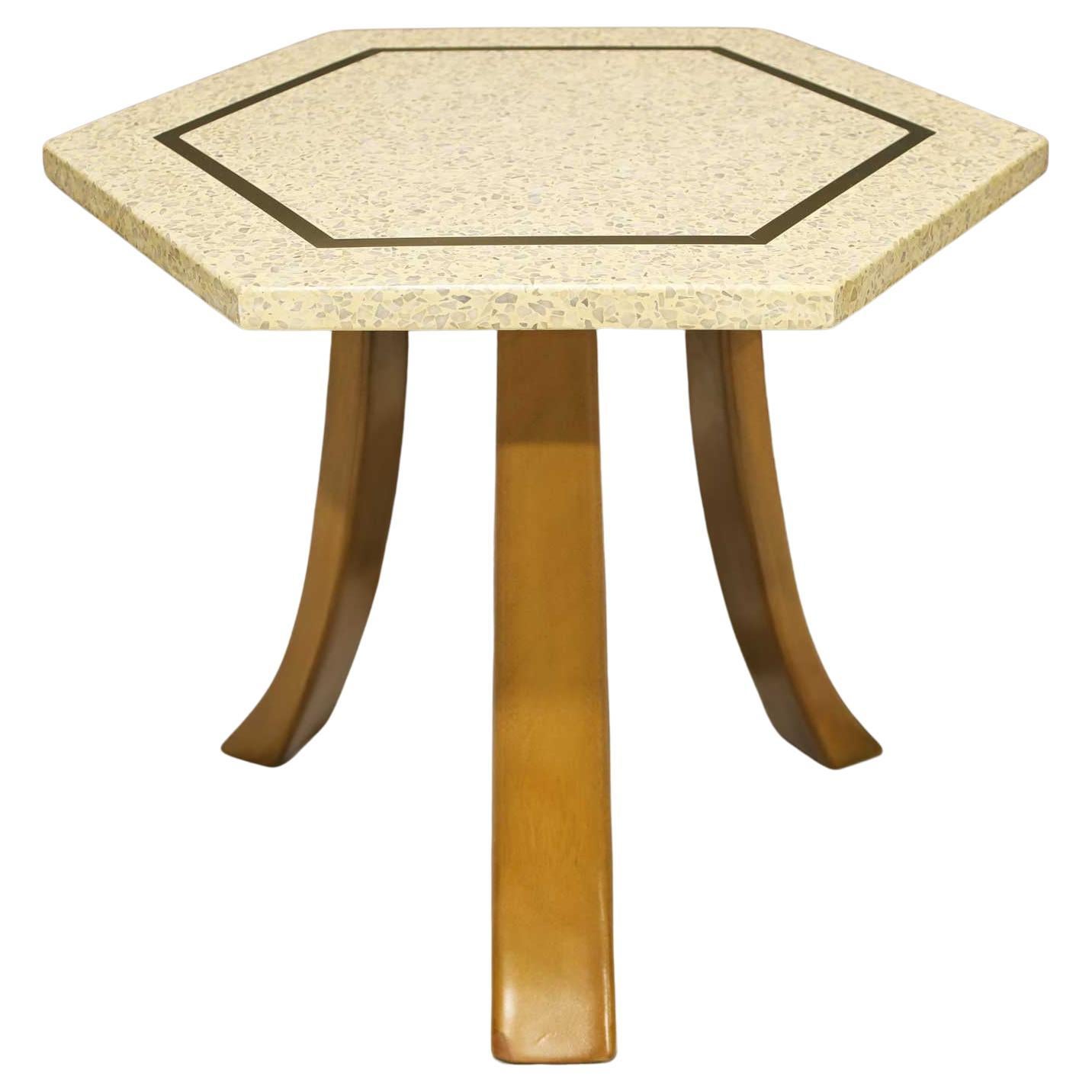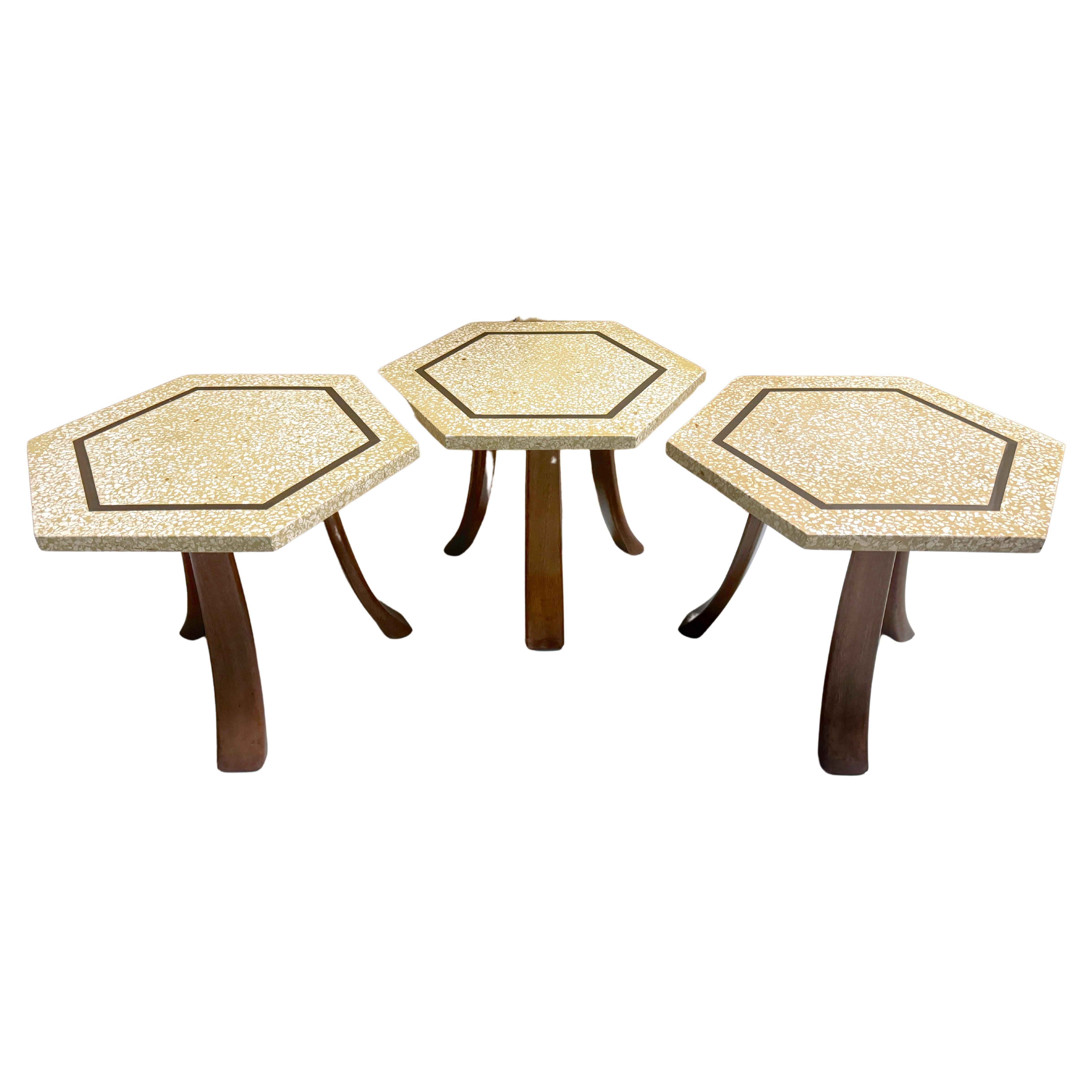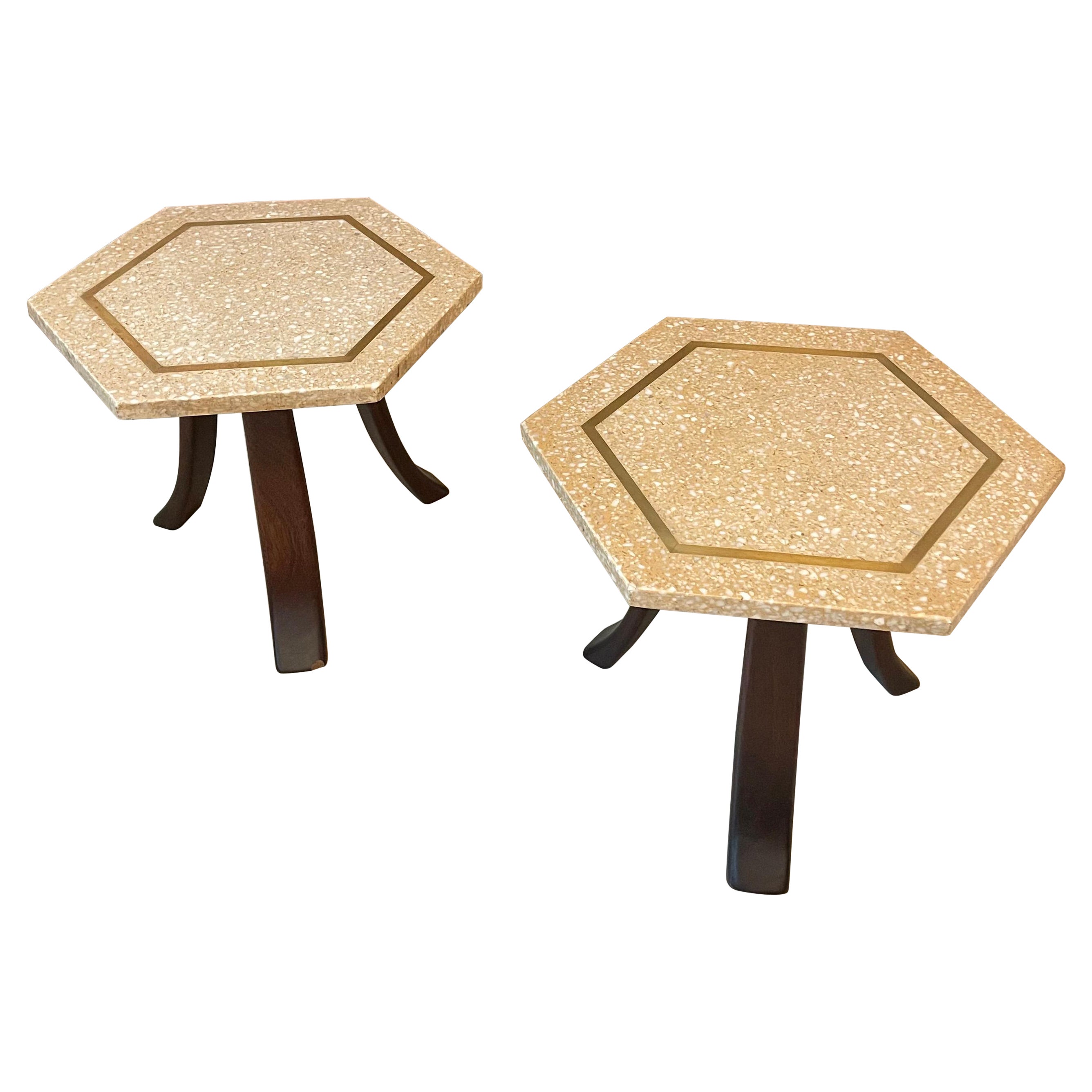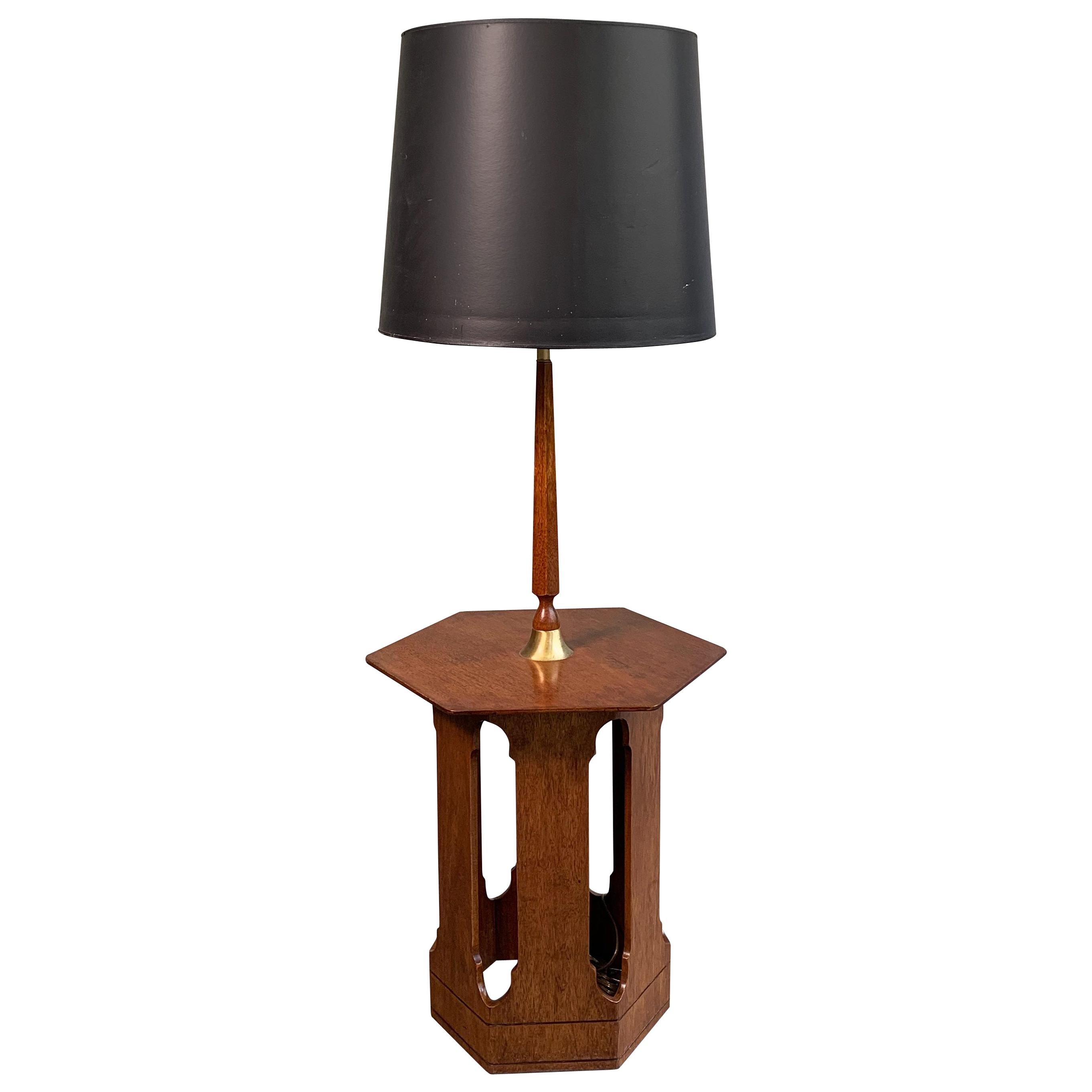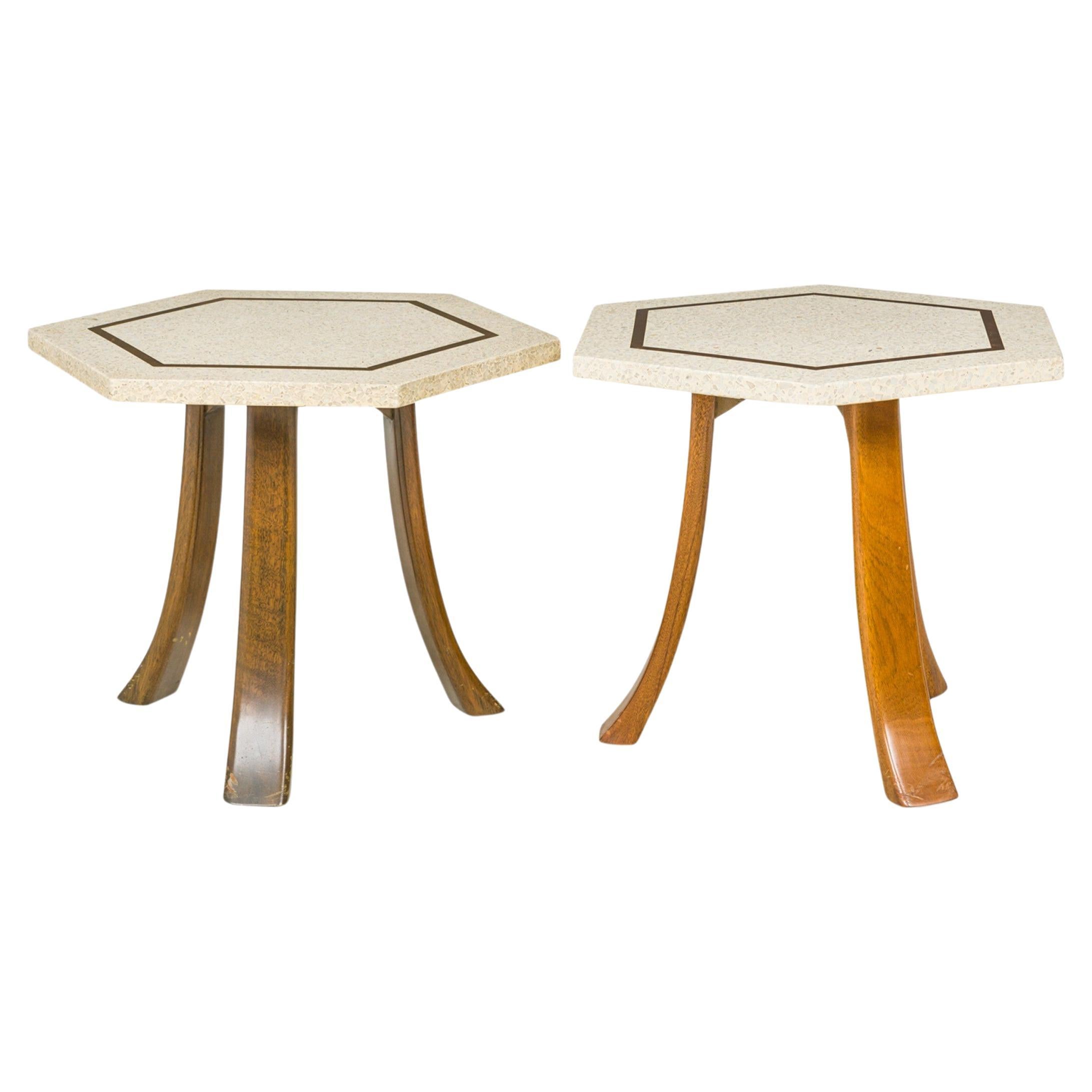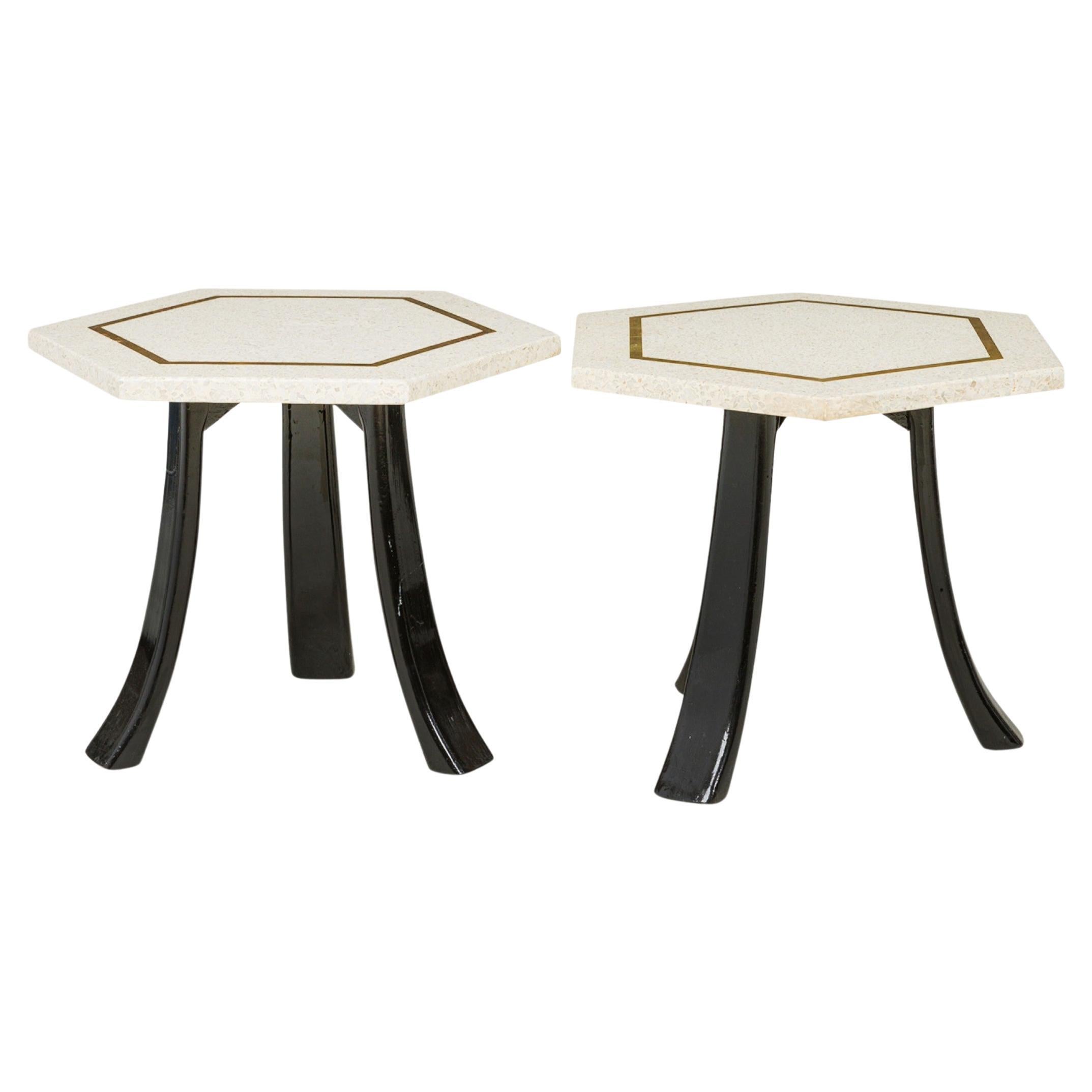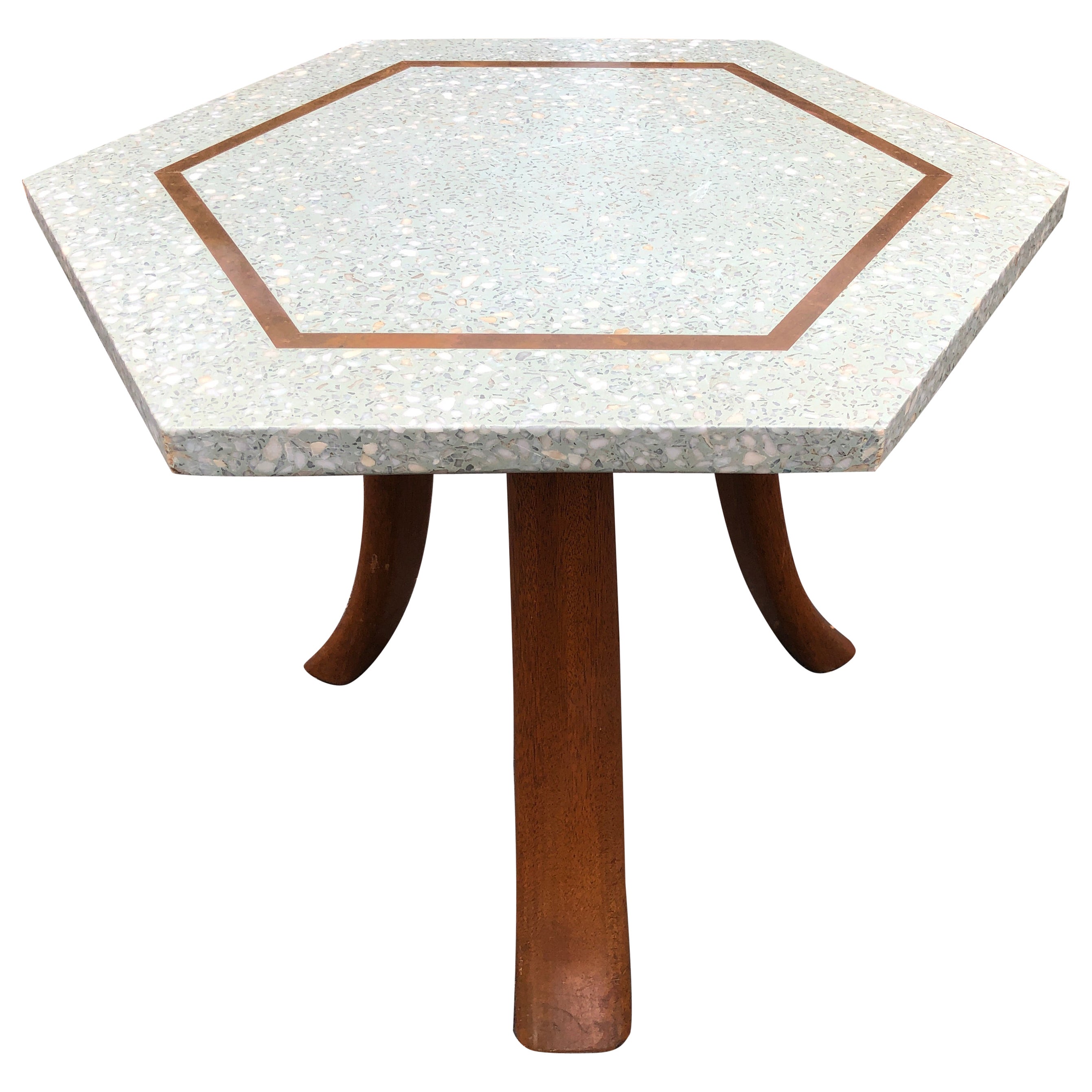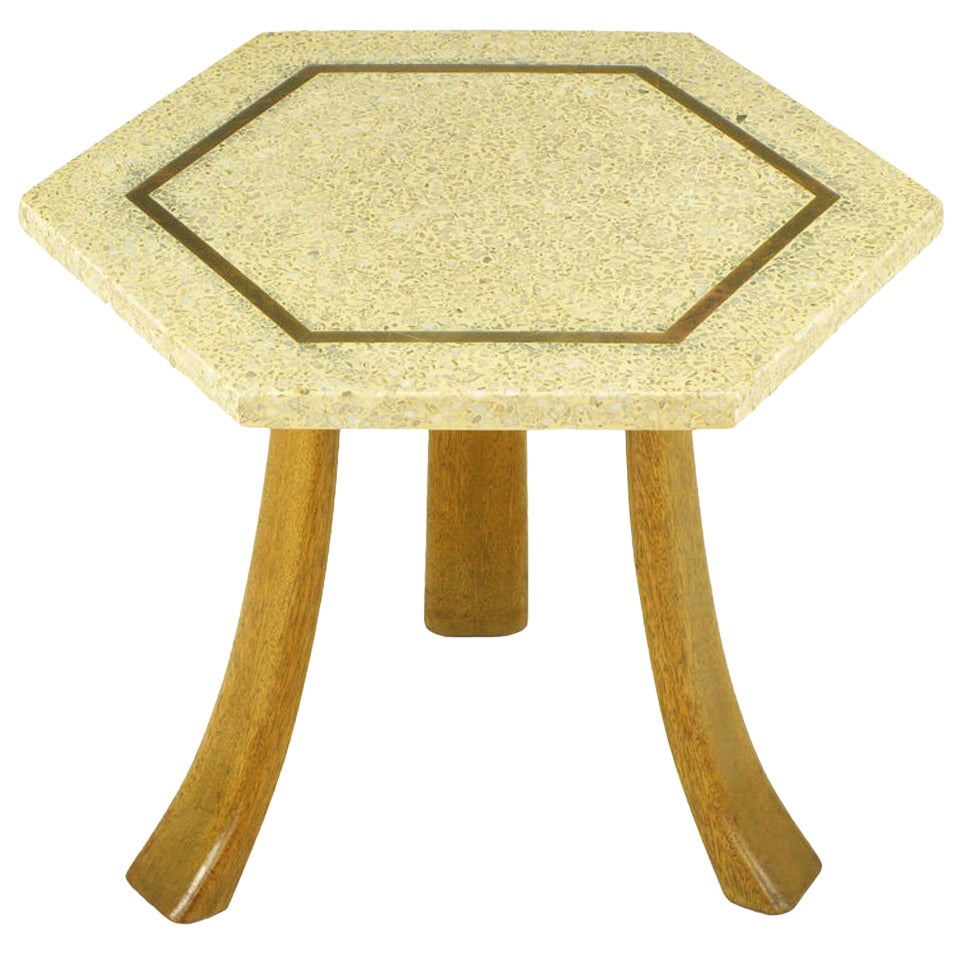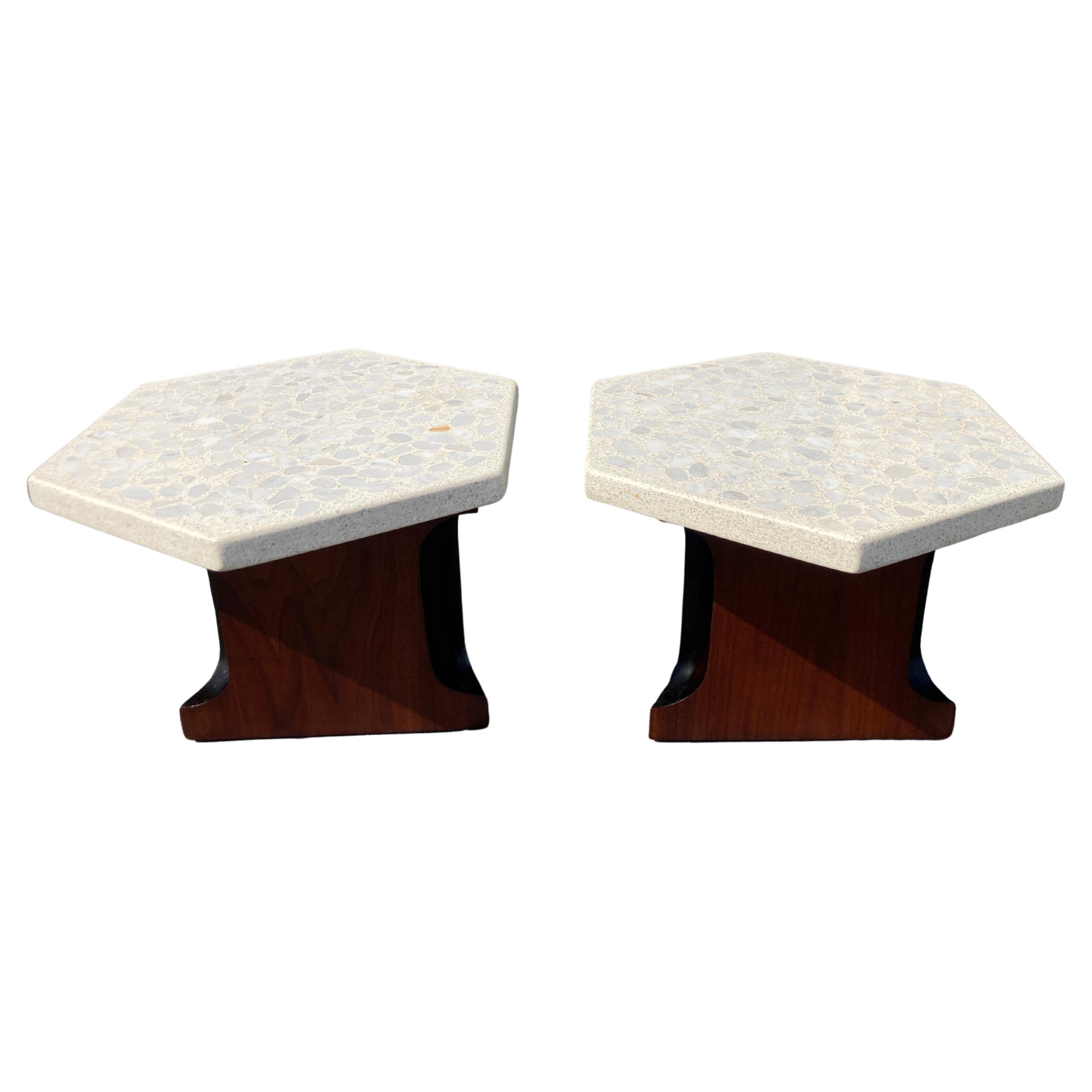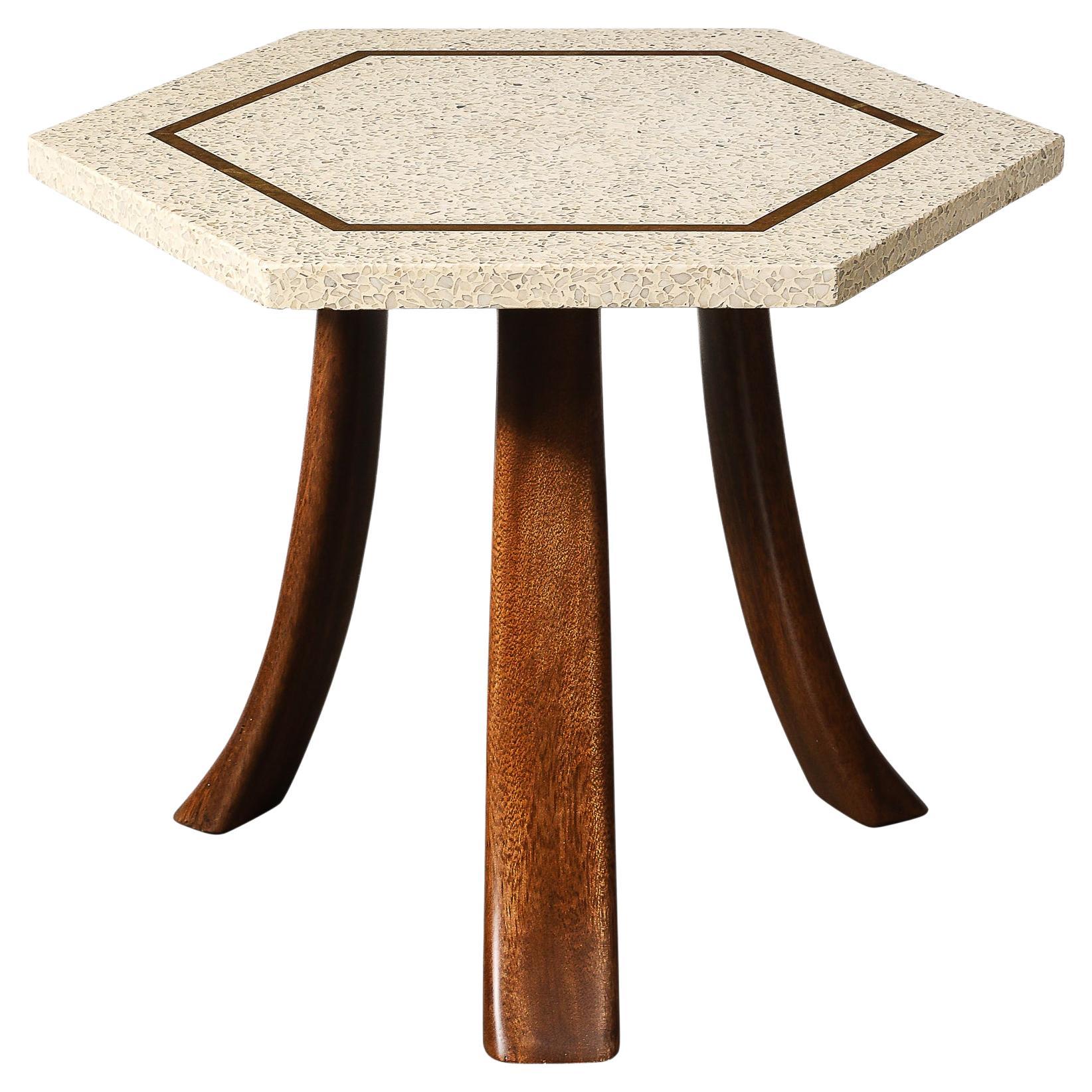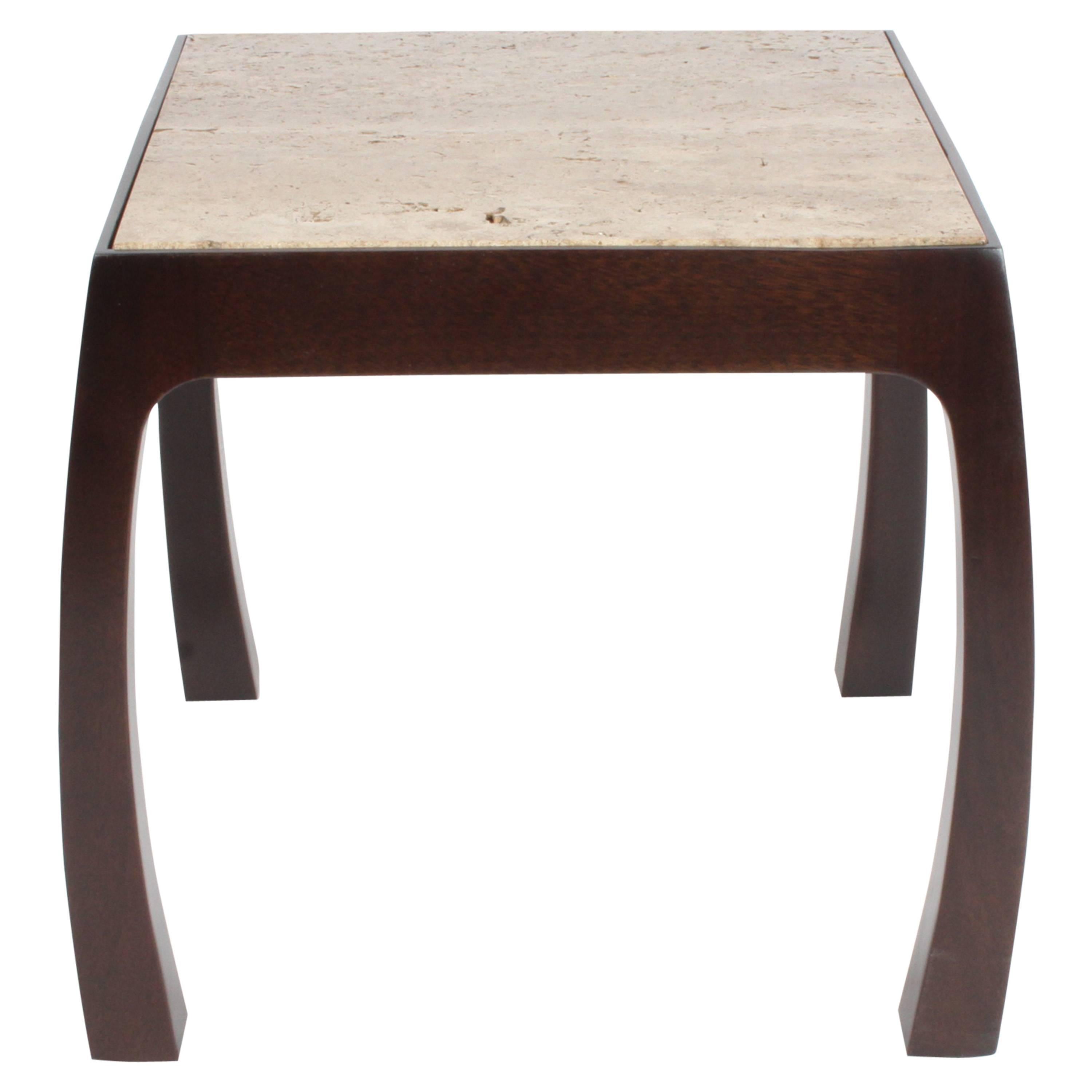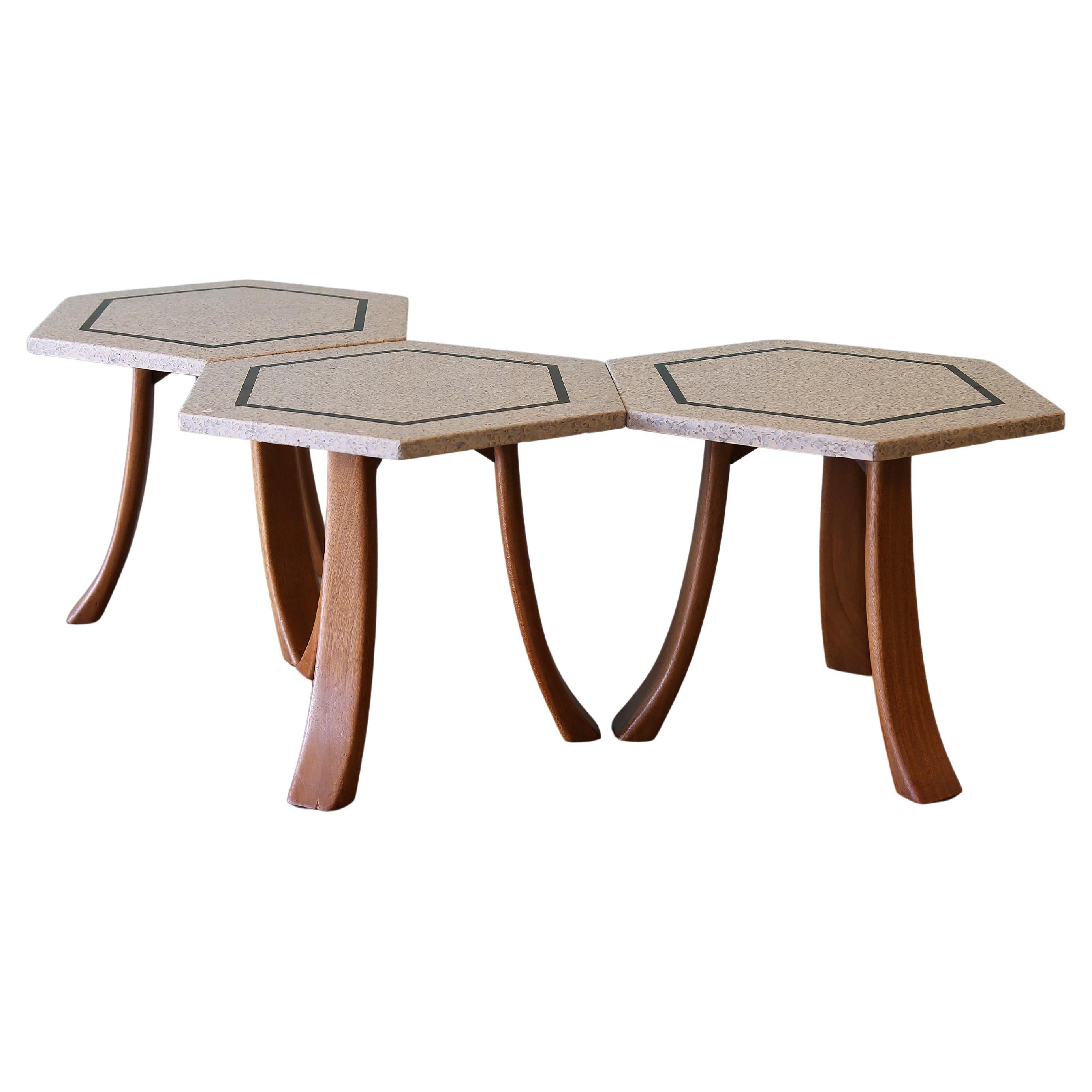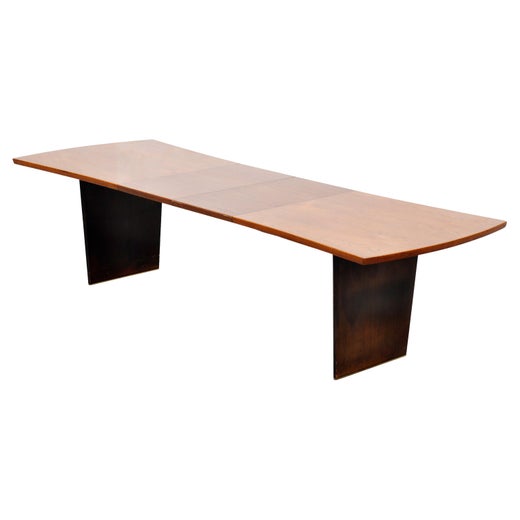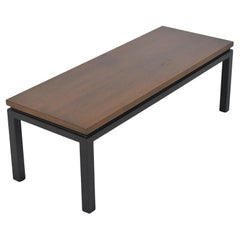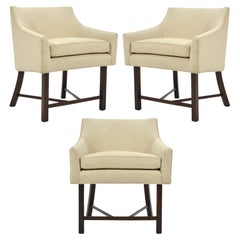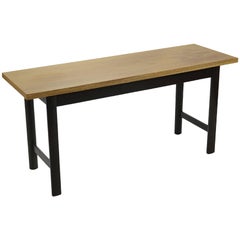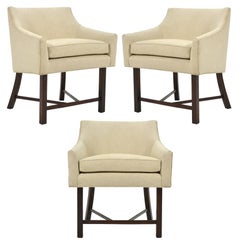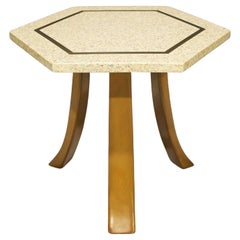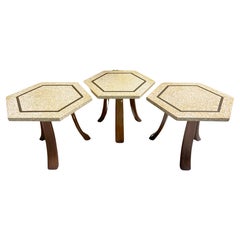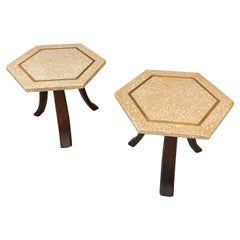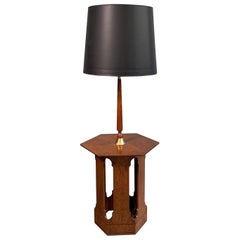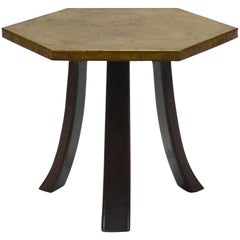
Harvey Probber Hexagonal Side Table with Bronze Top
View Similar Items
Harvey Probber Hexagonal Side Table with Bronze Top
About the Item
- Creator:Harvey Probber (Designer)
- Dimensions:Height: 17.25 in (43.82 cm)Width: 22.5 in (57.15 cm)Depth: 19 in (48.26 cm)
- Style:Mid-Century Modern (Of the Period)
- Materials and Techniques:
- Place of Origin:
- Period:
- Date of Manufacture:1950s
- Condition:Wear consistent with age and use. Original condition with age appropriate wear and patina.
- Seller Location:Highland, IN
- Reference Number:1stDibs: LU90915731803
Harvey Probber
A popular designer who had his heyday from the late 1940s into the 1970s, Harvey Probber is one of the post-war American creative spirits whose work has been recently rediscovered by collectors. His designs are by-and-large simple and elegant, but his signal achievement was to pioneer one of the key innovations of mid-20th century furniture: sectional, or modular, seating.
Even as a teenager, the Brooklyn-born Probber was making sketches of furniture designs — and selling them to Manhattan furniture companies. He began working as a designer for an upholsterer once he finished high school and, apart from a few evening classes he took as an adult at Pratt Institute, he was self-taught about design and furniture making.
After wartime service — and a stint as a lounge singer — Probber founded his own company in the late 1940s. A lifelong familiarity with the needs of New York–apartment dwellers doubtless sparked his most noteworthy creation: a line of seating pieces in basic geometric shapes — wedges, squares, half-circles — that could be arranged and combined as needed. Modular furniture remained the core idea of Probber’s business throughout his career.
As a self-trained designer, Probber was never wed to any particular aesthetic. He preferred the simple lines now associated with mid-century modernism for their inherent practicality, but often used hardware to enliven the look of his pieces, or added elements — such as a ceramic insert in the center of a round dining table — that was visually interesting and could serve as a trivet. He gravitated toward bright fabrics with attractive, touchable textures that might be satin-like or nubbly. Above all, Probber insisted that the sofas, case goods and other products that came out of his Fall River, Massachusetts, factory be built to last.
“The quality of aging gracefully,” Probber once told an interviewer, is “design's fourth dimension.” This quality he realized: Probber furniture is just as useful and alluring now as it was when made — and maybe even more stylish.
Find a collection of vintage Harvey Probber side tables, sectional sofas, chairs and other furniture on 1stDibs.
More From This Seller
View AllVintage 1960s American Mid-Century Modern Coffee and Cocktail Tables
Mahogany
Vintage 1950s American Mid-Century Modern Armchairs
Upholstery, Mahogany
Vintage 1950s American Mid-Century Modern Console Tables
Mahogany, Rosewood
Vintage 1950s American Mid-Century Modern Armchairs
Upholstery, Mahogany
Vintage 1950s American Mid-Century Modern Side Tables
Slate
Vintage 1950s American Mid-Century Modern Side Tables
Brass
You May Also Like
Mid-20th Century American Mid-Century Modern Side Tables
Brass
20th Century American Mid-Century Modern Side Tables
Bronze
Mid-20th Century American Mid-Century Modern Side Tables
Brass
Mid-20th Century American Mid-Century Modern Floor Lamps
Brass
20th Century American Mid-Century Modern Side Tables
Marble, Bronze
20th Century American Mid-Century Modern Side Tables
Marble, Metal, Bronze
